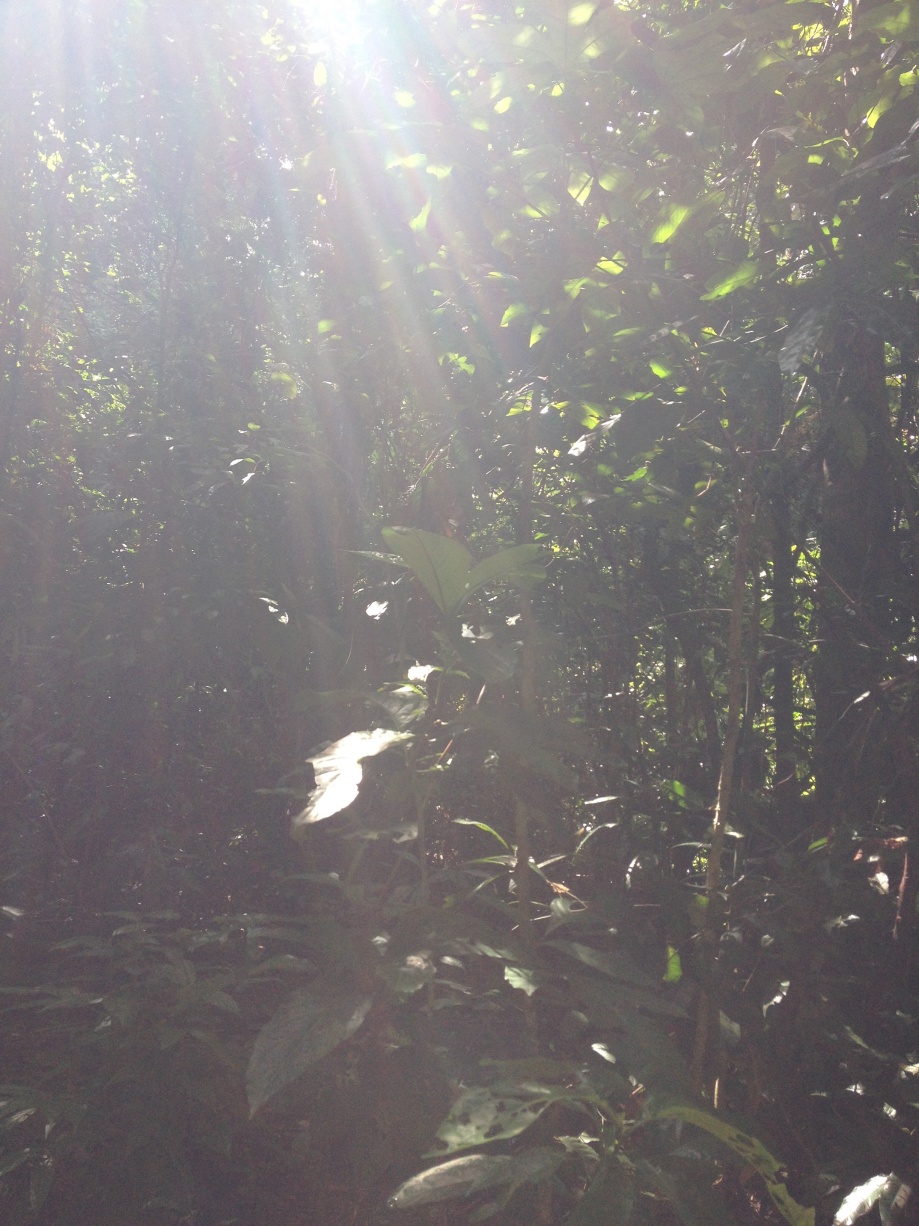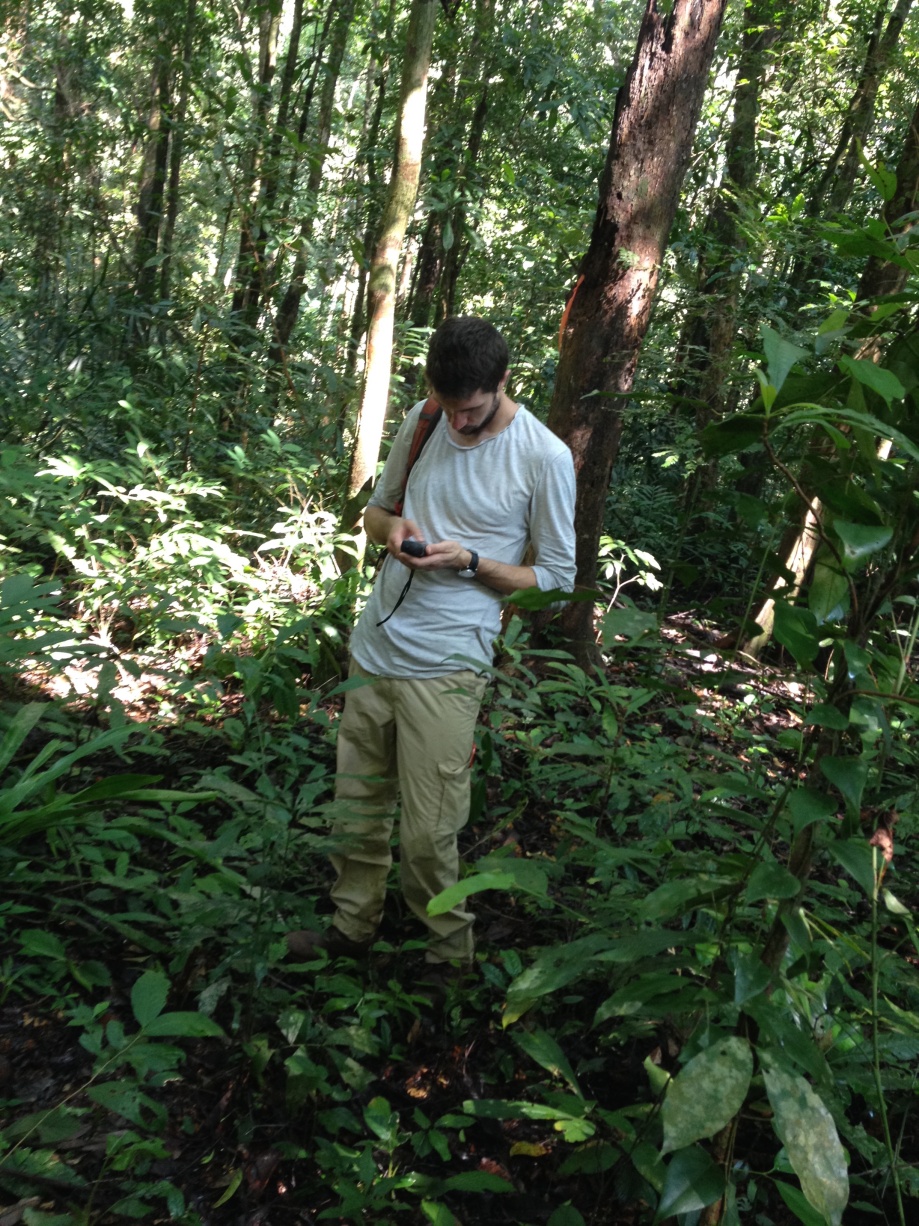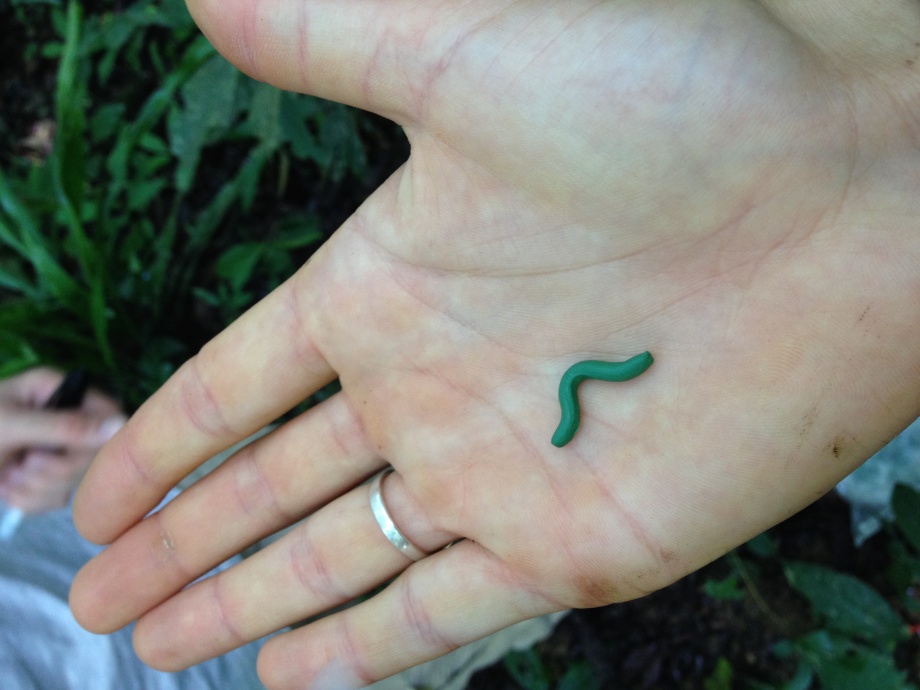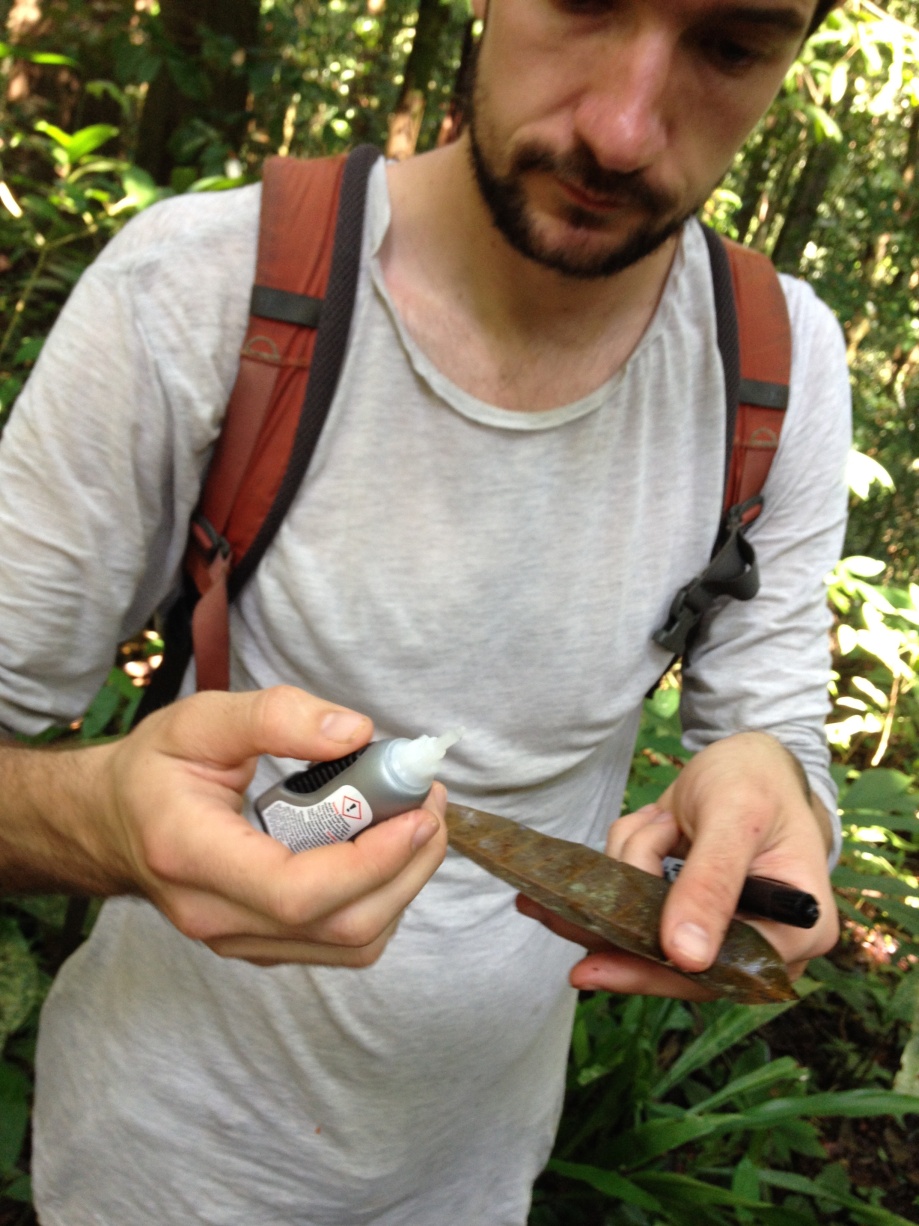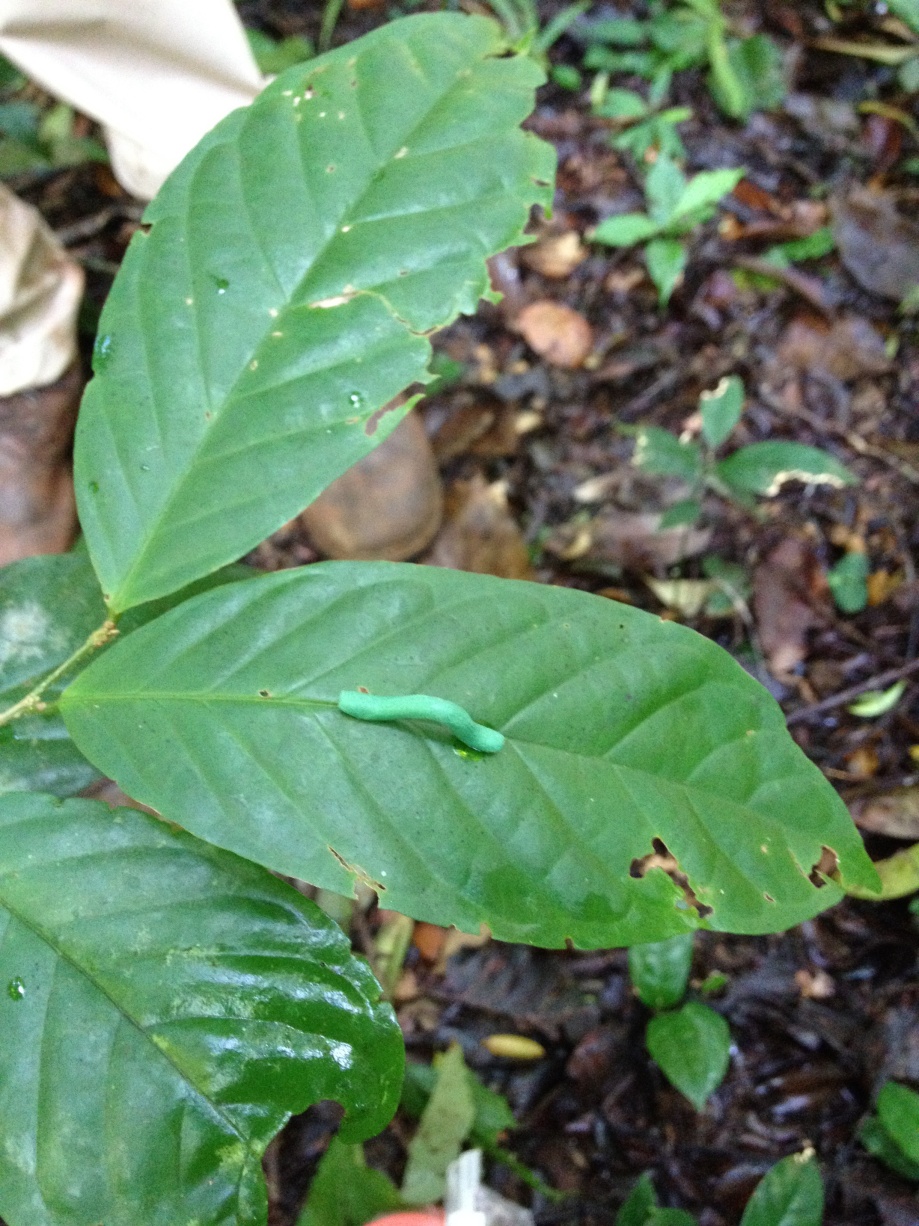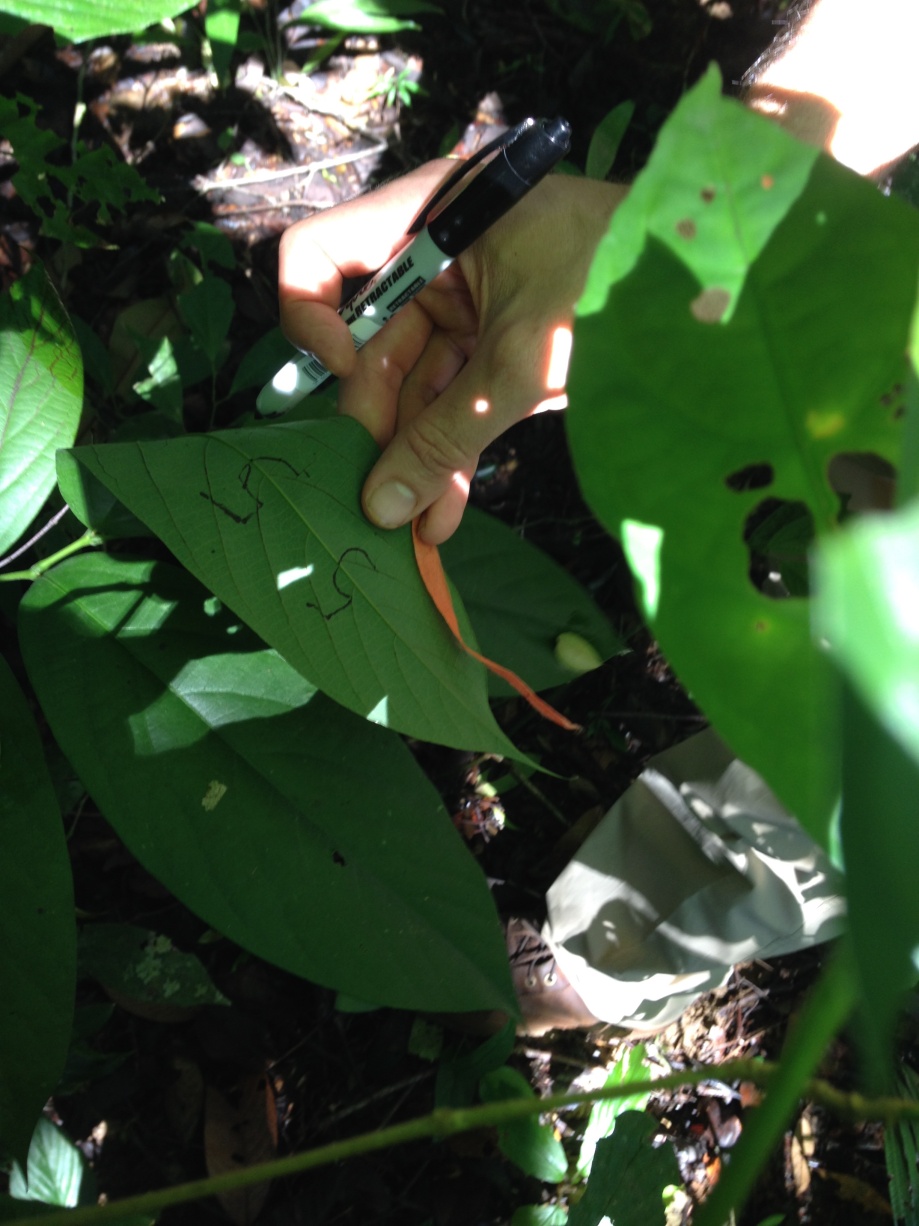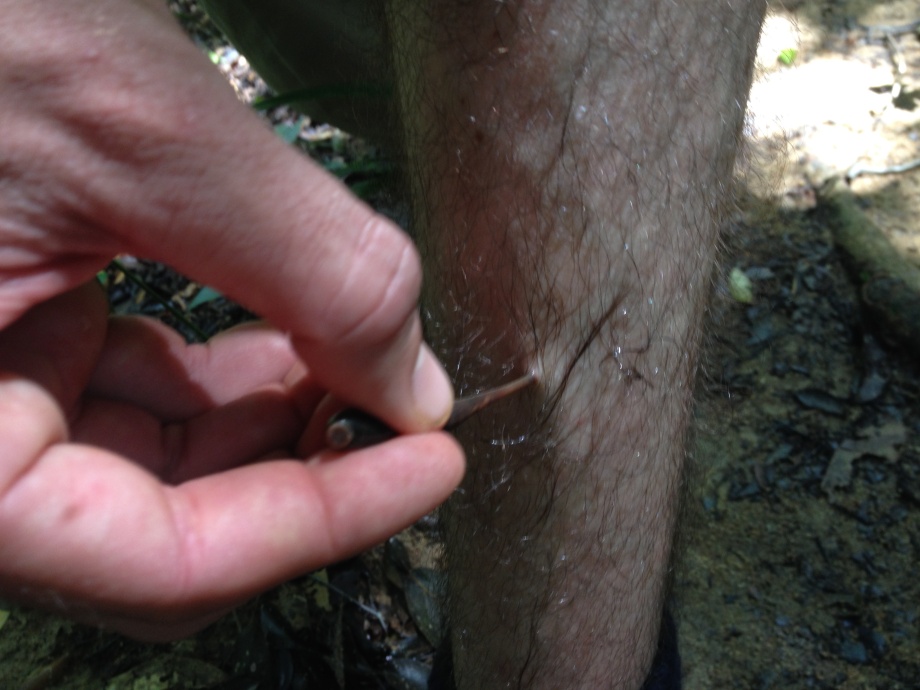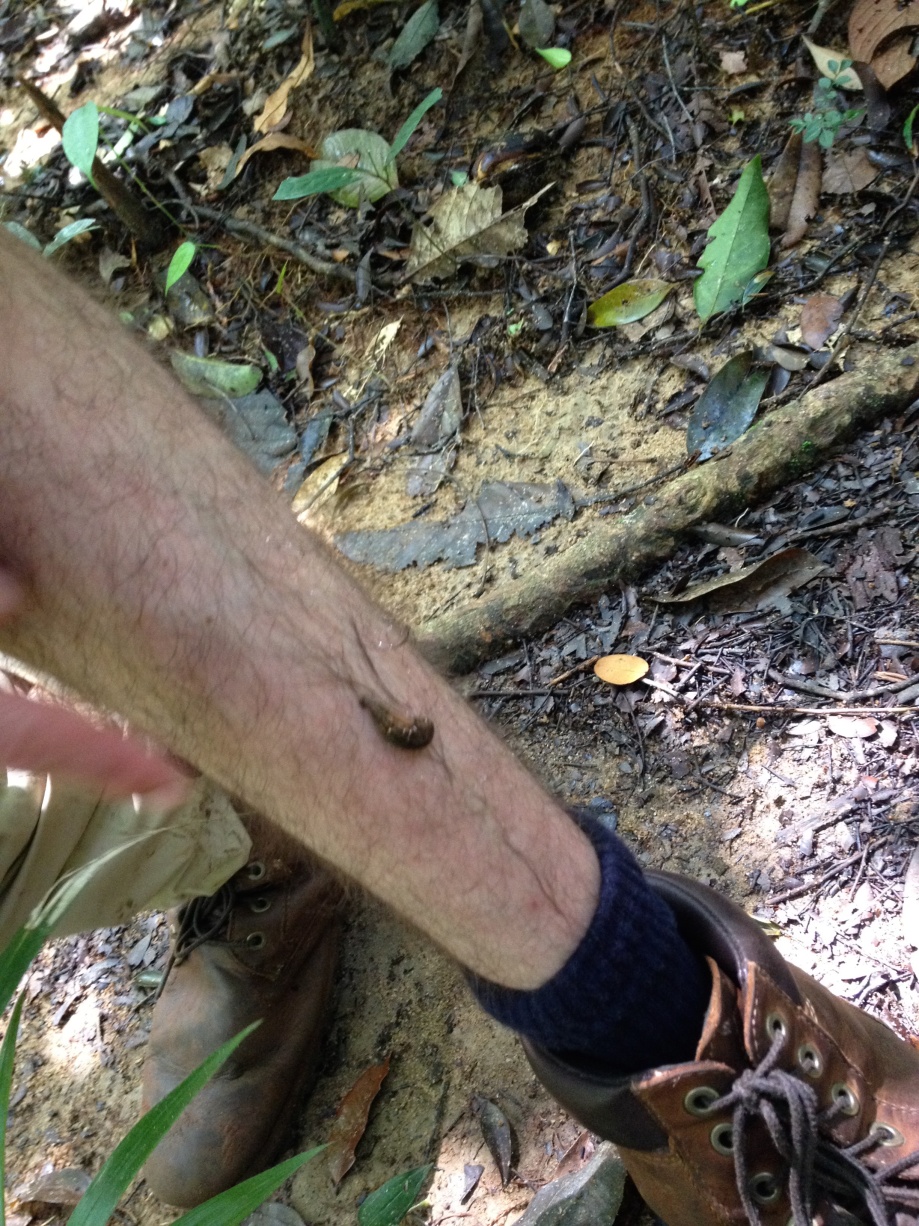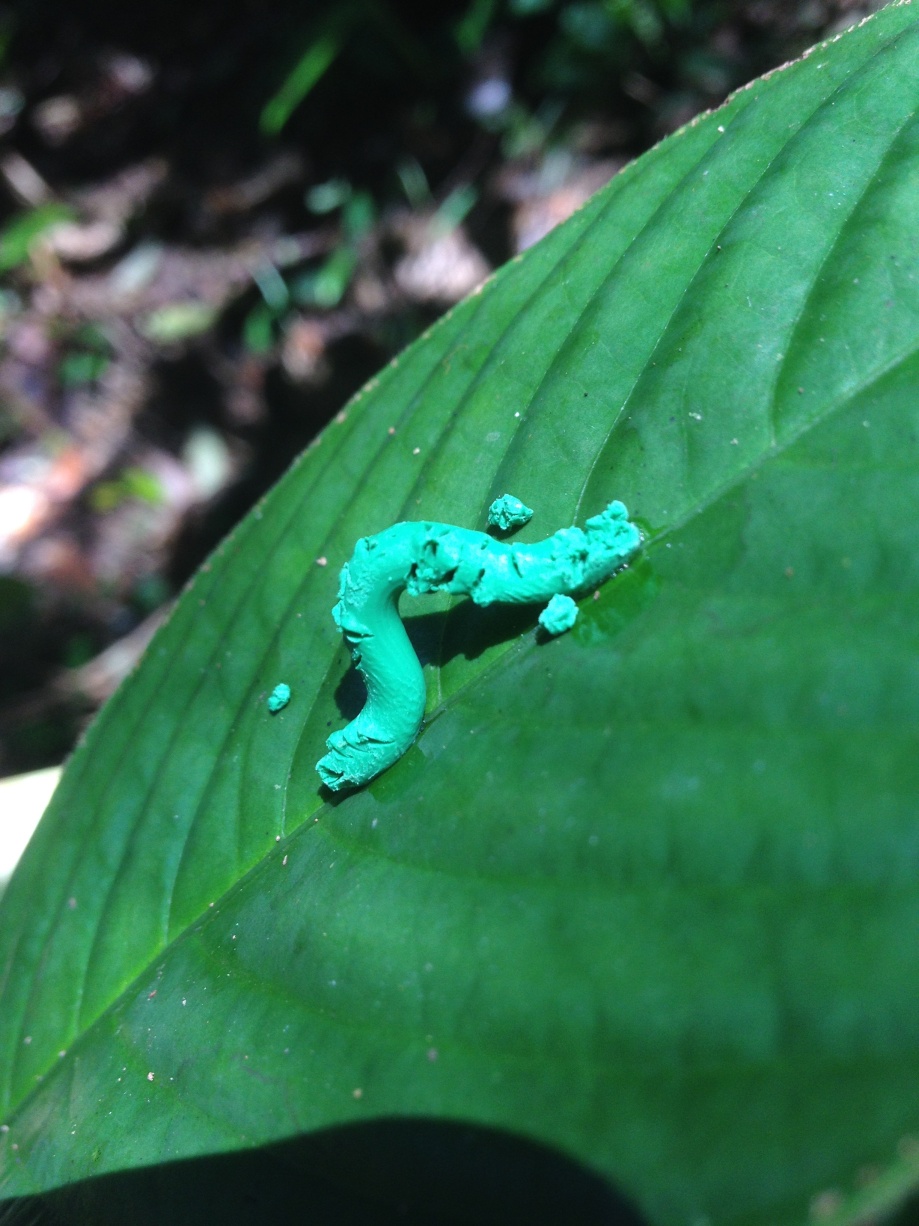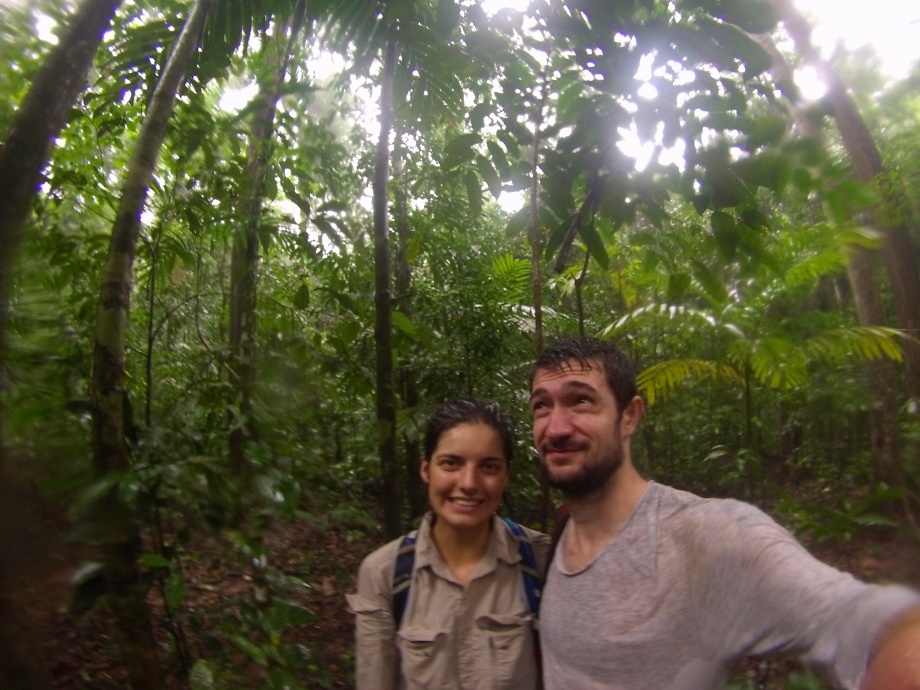Before I left for Thailand, my supervisor in Oxford gave me 100 little green plasticine caterpillars to bring with me to Khao Chong. They form part of a study that measures the density of predation rates on caterpillars (seed predators). The fake caterpillars are stuck onto leaves with superglue and then checked every day for a set number of days to see if there has been any sign of predation. This study is being done all over the world and we wanted to collect data for the jungle here in Khao Chong.
Sol and I set up the study the day after we got back from Railay. I rode Jean’s moped to the plot and then we hiked deep into the jungle. It was a very humid morning, over 95% humidity; clouds of water vapour formed under the forest canopy. My shirt clung to my clammy skin, damp from the humidity and sweat.
It took us a good few hours to stick the 100 caterpillars onto leaves. They kept falling off and we were getting very frustrated with the little sausages of plasticine, trying desperately to gain perspective and see the bigger picture of the work that we were doing.
Shortly after starting I noticed that there was blood all over Sol’s trousers. He wasn’t wearing any leech socks and the little buggers had crawled up his boots looking for a tasty meal. Sol pulled up his trouser leg to reveal numerous big, swollen, black leeches dotting his shins and streams of blood running from the wounds.
That morning we saw some very interesting insects. We watched a praying mantis devour some sort of fly, took photos of some beautiful butterflies, and tried to identify the iridescent blue dragonflies that flew around us in great swarms. The sounds of the jungle enclosed us: bird song, cicadas chirping and the wind through the trees. I love the jungle here and feel incredibly fortunate that I have the opportunity to work here.
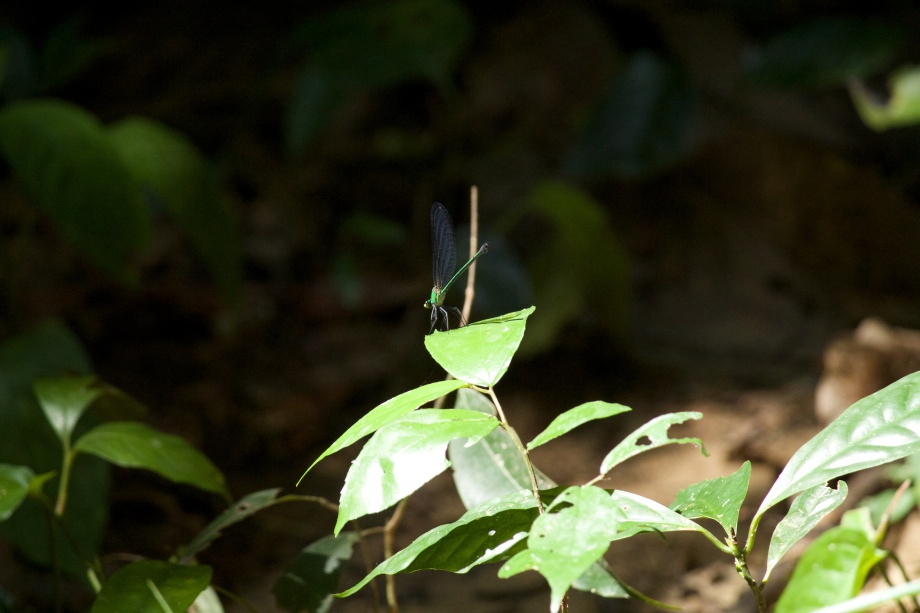
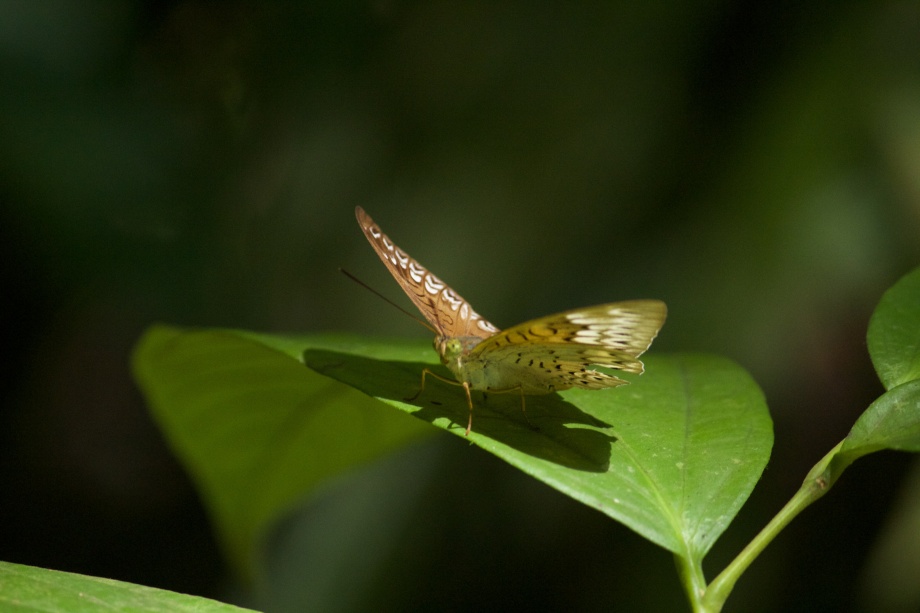


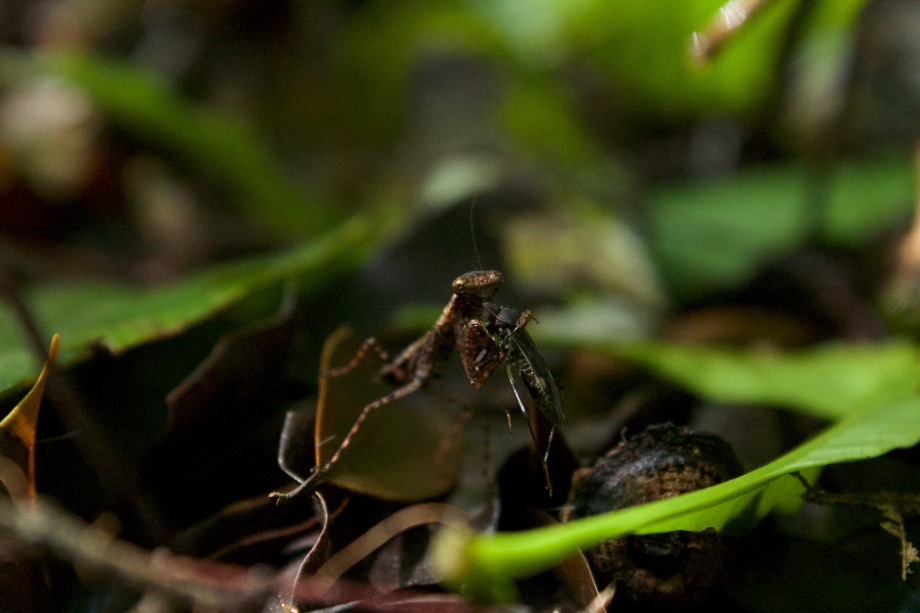
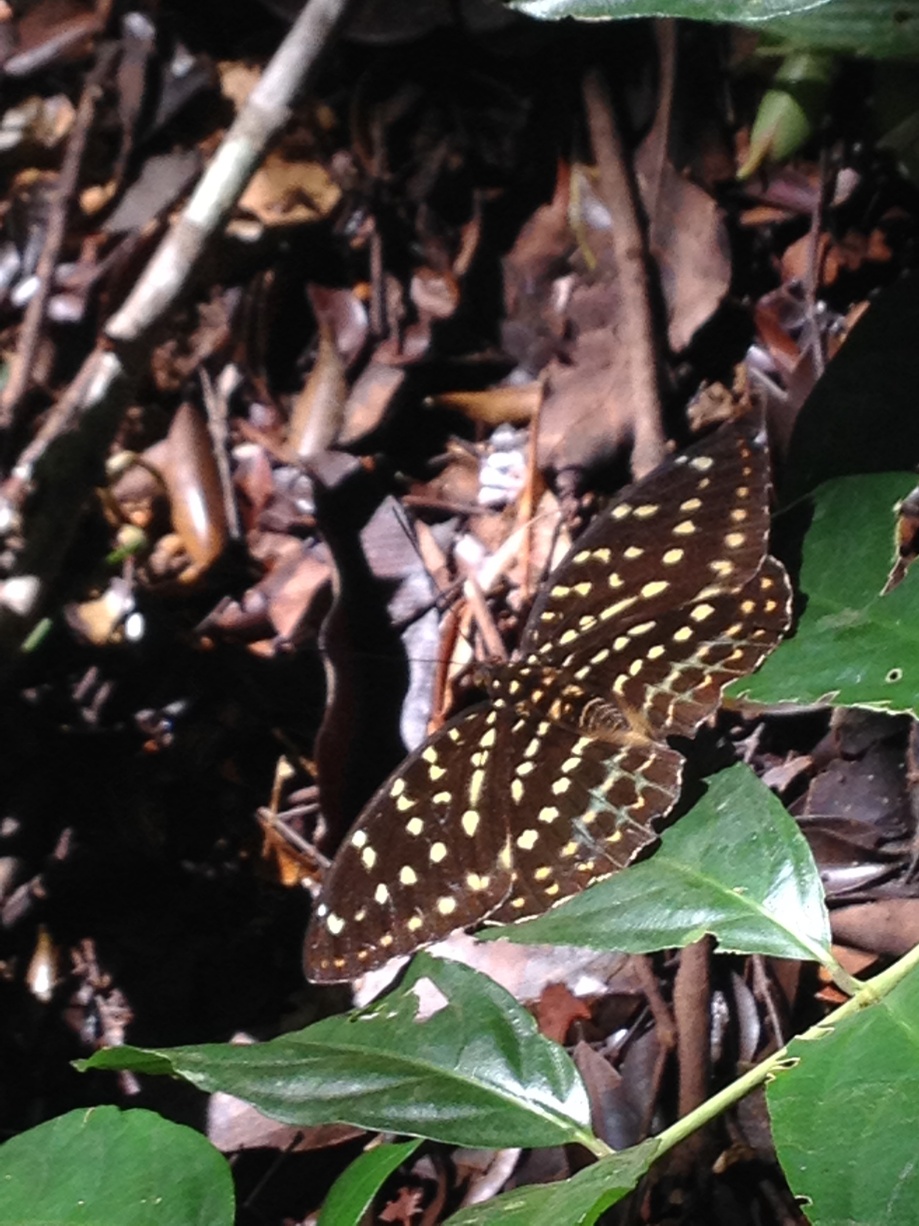 The following two mornings we checked the caterpillars for any signs of predation. A few had been eaten and we tried to identify the predator responsible, for example ant, bird or mammal etc. On the second day we saw a solitary bee tuck into one of the caterpillars. It was very interesting to see and quite unexpected, as nectar or pollen should be a bees main food source not caterpillars.
The following two mornings we checked the caterpillars for any signs of predation. A few had been eaten and we tried to identify the predator responsible, for example ant, bird or mammal etc. On the second day we saw a solitary bee tuck into one of the caterpillars. It was very interesting to see and quite unexpected, as nectar or pollen should be a bees main food source not caterpillars.
On the final day we cycled to the plot; it was the weekend and Jean wasn’t at work so we couldn’t borrow his moped. That morning it was pouring with rain, as it had been most of the night. Nearly all of the caterpillars had fallen off the leaves as a result and so we spent many hours that day searching through leaf litter on the forest floor for the caterpillars. We managed to collect most of them and then we cycled back to the field station. The caterpillars will be taken back to England and then sent to Finland to be inspected by experts in order to determine the predator type and the density of predators in the forest here. As I understand it these results will be compared to those from different habitats from around the world to see how predation rates change with habitat type.
